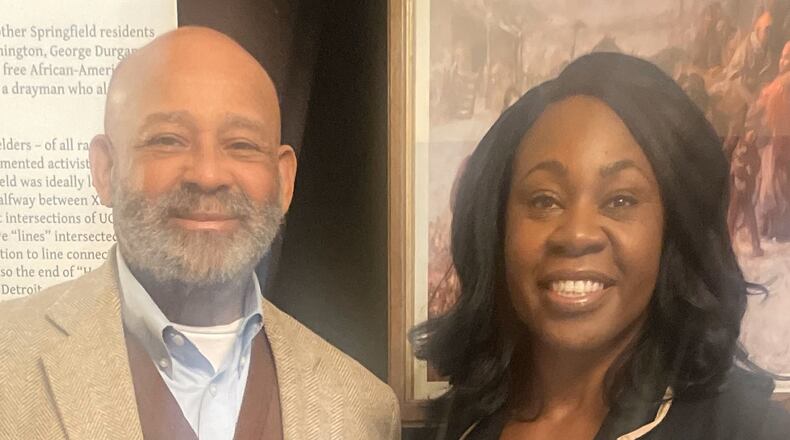The project uses social media, genealogy and DNA as part of reunification efforts for modern-day descendants. She’s already had several connections and hopes the film will attract even more attention.
“A lot of people don’t know about the people moved after 1810. There were 875,000 moved across state lines,” said Bailey. “Ohio’s history is so interesting, and learning and understanding about the Gammons was important in this. It was courageous for this Black family to risk everything and a story that’s important for so many reasons. Stories about Black people fighting for others is not told enough.”
Bailey learned about the Gammon house from historian Art Thomas. This part of the documentary will focus on the risks the Gammons took and how instrumental free Blacks were in helping escaped slaves attempt to find freedom.
This was Henry’s second time being involved in a documentary, having previously worked with a team from Wright State University. He hopes this exposure will help make the Gammon House, located at 620 Piqua Place, more visible and a regional destination.
“It’s a tremendous honor to be chosen for this and the special chance to promote the Gammon House and Springfield,” Henry said. “Pam and her team were extremely professional and efficient and covered a lot of important information. It’s an exciting opportunity for people to learn her program because a lot of us don’t know who we’re related to.”
Although the Gammon House functions as a museum and is the site for several events throughout the year, including Juneteenth, Henry has a vision to create an interpretive center on the campus in the future.
Already a writer, this is Bailey’s first documentary. Her aim is to educate and to get this information out to the masses.
“A film is the perfect tool to have a meaningful conversation,” Bailey said. “Some of these stories are so deeply moving. My goal is for families to look at the film and see these stories that are so deeply moving, and I want to see how they can duplicate our other successes.”
Bailey’s goal is to get the documentary shown sometime in 2024, with PBS as the preferred outlet. She’s grateful for Ohio and the Gammon House being part of the story.
“The people in Ohio were so lovely every place I went,” she said.
For more information on the Antebellum Diaspora Project, go to www.antebellumdiaspora.com.
To visit the Gammon House or for more information on it, go to gammonhouseoh.org/.
About the Author
